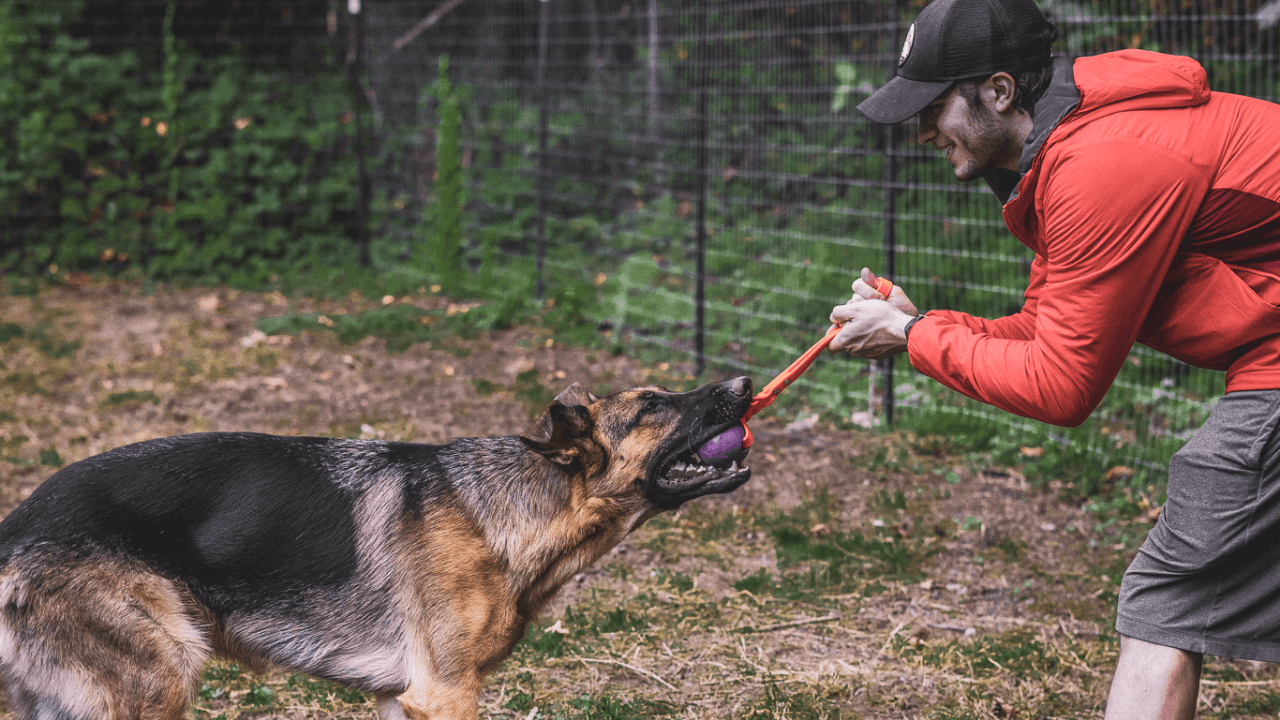Using toys instead of treats for training is a game-changer. Every play session becomes significantly more mentally stimulating for your pup, tiring them out faster while working their brain with their body.

In order to successfully build drive, you have to know what drive is and how it's created. According to gsdtotal.com: "Drive is the ability and propensity of a dog to exhibit a particular pattern of behaviors when faced with particular stimuli."
That "stimuli" can be various things, with one of our favorites being frustration. Frustration builds drive because the more your dog comes close to having the stimuli, the more frustration builds, and the more they want it. That's not to say your dog shouldn't have it - they always should get a victory, otherwise you're building unending frustration which can have contradictory results.
When specifically looking to build toy drive, we have two different suggestions based on your dog being a puppy or a teenager/adult.
Every Dog is Different
Always remember that each and every pup has their own likes, dislikes, preferences, and learning styles. You might try to build toy drive but it might not click with them - that's okay. No matter what, train the dog in front of you and have fun doing it!
With a Puppy
During puppyhood, many people choose not to do any obedience, but focus on you and your dog's bond, socialization, and the basics (like potty training). Puppyhood is the best time to try and build toy drive as puppies absorb so much at that young age that typically remain lifelong habits.
Follow these basic steps to build toy drive:
- Clear your puppy area of any and all distractions, such as other toys and chews.
- Get a toy (such as one of our tugs) that you want to build drive for.
- Start getting them to play with that toy. Make it embarrassingly exciting when they interact with the toy to help grow their interest. Even if it's just a sniff at first.
- When you're done playing, put the toy away. End on a good note and do not leave it out for free access.
- Repeat as much as needed. Over time, as soon as that specific toy comes out to play, you'll see their face light up and ready to do anything to get it!
Teenager/Adult
If your dog doesn't inherently have toy drive, it is more difficult to build it the older they get. There is a big difference in building toy drive in a 1 year old dog vs. an 8 year old dog, as their ability to learn new things takes more time.
Here are some steps to work on building toy drive in an older dog. Some steps are similar to building drive in a puppy but with twists:
- Clear your training area of any and all distractions, such as other toys and chews. You may find it helpful to remove toys entirely from their daily routine, except for the one you're trying to build drive towards.
- Get a toy (such as one of our tugs) that you want to build drive for.
- Start getting them to play with that toy. Make it embarrassingly exciting when they interact with the toy to help grow their interest. Even if it's just a sniff at first.
- As they begin to gain interest, let them go for the toy and quickly pull it away right as their mouth closes. Do this a few times, then let them get it. This is also a great opportunity to teach/reinforce "out" or "drop it".
- Repeat until you see their interest peaking. Then, throw in some very basic obedience such as "sit" or "down", and reward immediately (do not pull away).
- When you're done playing, put the toy away. Do not leave it out for free access. *The reason we don't advice free access of training toys is that they can lose their interest if they're just another toy in the bin.









